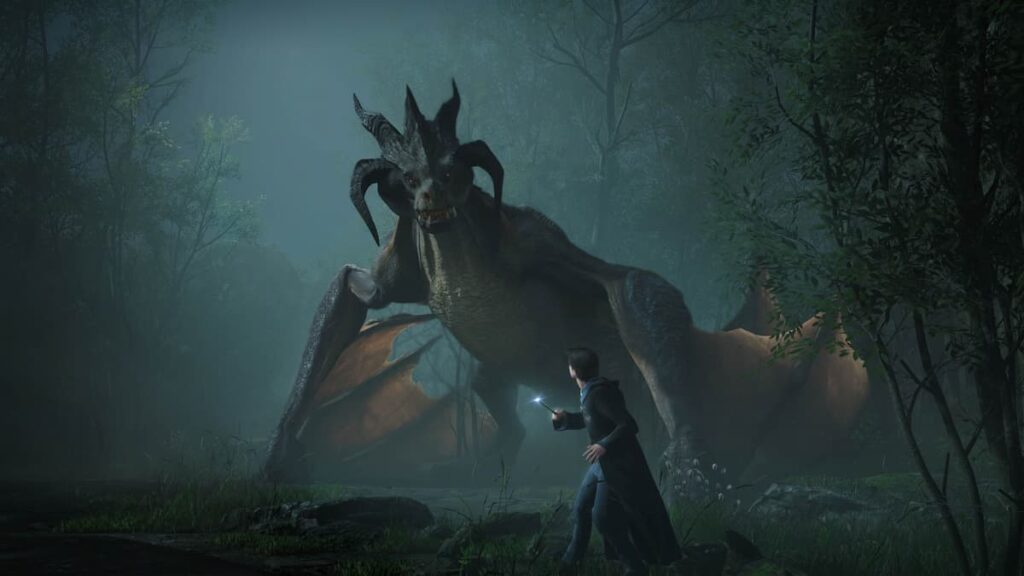Over nine months after its original PS5, Xbox Series X|S, and PC release, and six months after its surprisingly solid duo of PS4 and Xbox One ports, we finally have the Switch version of Avalanche Software’s epic fantasy RPG in the world of Harry Potter. Of course, with the hardware’s aging chipset, it’s fair to say that players are curious as to how the title performs on the big N’s plucky handheld console. So, for those interested in how Hogwarts Legacy runs on Switch, here’s the rundown.
How Hogwarts Legacy Performs on Nintendo Switch
(Updated on August 13, 2024 – updated links and format)
At its core, the Switch port of Hogwarts Legacy has been scaled back significantly in order to get it running on Ninty’s diminutive system. From a fidelity perspective, the overall visual quality has been pared back in almost every conceivable way.
Lighting and shadow quality, for instance, has been reduced dramatically, and there are fewer reflections in the Switch version when compared directly to its next-gen brethren. Furthermore, the Switch employs dynamic resolution scaling, which means that the game’s resolution fluctuates on the fly in order to reduce the workload on the system’s GPU.
While the textures of many environments and objects appear a little washed out, the character models and animations fare a lot better and look fairly comparable to its peers. Alongside this, draw distances have been reduced significantly, with noticeably choppy animations of distant moving objects. Occasionally, if a character or object is moving in the far distance, you’ll sometimes get a juddering effect that looks quite jarring on Switch.
Performance-wise, the Switch version of Hogwarts Legacy targets 30 frames per second, and it largely succeeds at hitting this, especially in the interior segments of the game. In more open areas, however, the Switch struggles to maintain this framerate, resulting in some hitches, especially when things get busy during combat.

From our experience, Hogwarts Legacy looks at its worst when it’s in handheld mode, thanks to some considerably major texture pop-in. This is particularly egregious when you load into a brand-new area. Basically, it takes a little longer for textures to load when you’re playing in the Switch’s handheld mode. In addition, the density of NPCs has been decreased as well, resulting in an emptier-feeling world.
Ultimately, though, the most glaring issue with the Switch iteration of Hogwarts Legacy is that it’s no longer a true open-world experience. Essentially, players will be faced with a loading screen when entering Hogsmeade, which wasn’t the case in the title’s other versions. In addition, entering shops in Hogsmeade — which was originally a seamless experience — is now halted by a 30 – 50-second loading screen, which is obviously pretty sub-optimal.
Meanwhile, when players explore the interior sections of Hogwarts Legacy‘s shops and classrooms, they’ll notice less visual flourishes, like missing bookshelves, tables, and other ornaments that were in the original versions.
Last but not least, the Switch port of Hogwarts Legacy requires a mandatory 8GB day-one patch to get the game running. In fact, even if you purchase the physical copy of the title, you’ll need to connect online and download the patch. Otherwise, the game will not run out of the box.
While many of these changes are understandable, given the age and specs of the Switch, it’s still a small victory being able to experience the game natively on Nintendo’s hardware. Of course, the other potential approach could’ve been to leverage streaming technology and release a Cloud version much like, say, Resident Evil 7, Control, and Hitman 3. Suffice to say, while this may not be quite on the same level as its next-gen competitors, it’s still an impressive feat getting such a huge game running on such a small, underpowered system.







